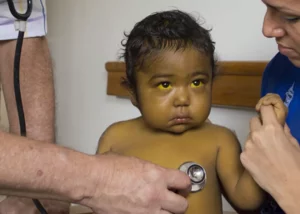Hepatitis is an inflammation of the liver. Inflammation is a swelling that occurs when body tissues become injured or infected. This can affect the proper functioning of your liver and there are several types.
Now, hepatitis A is a type of viral hepatitis. It causes an acute, or short-lived, infection. In general, this means that people get better without treatment after a few weeks. It is particularly common among children and young adults.
Hepatitis A is caused by an enteric-transmitted RNA virus that, in older children and adults, causes symptoms typical of viral hepatitis, including anorexia, malaise, and jaundice.
Symptoms of Hepatitis A
Not all people with hepatitis A have symptoms. However, if you do have symptoms, they may include the following:
- Unusual tiredness and weakness.
- Sudden nausea, vomiting and diarrhea
- Abdominal pain or discomfort, especially in the upper right side below the lower ribs, which is above the liver
- Clay-colored or gray stools
- Loss of appetite
- Low fever
- Dark urine
- Joint pain
- Yellowing of the skin and whites of the eyes (jaundice)
- Intense itching
These symptoms may be relatively mild and disappear after a few weeks. However, it is necessary to consult a specialist and check that everything is in order because hepatitis A results in a serious illness that lasts for many months.
Specific ways the hepatitis A virus can be spread:
- By eating food handled by someone who has the virus and who did not wash their hands thoroughly after going to the bathroom.
- Drinking contaminated water.
- Eating food washed in contaminated water.
- Eating raw shellfish from contaminated sewage.
- Being in close contact with a person who has the virus, even if they do not have symptoms.
- Having sexual contact with someone who has the virus.
The virus is spread when infected feces, even in small amounts, enters another person’s mouth (fecal-oral transmission). It can live on surfaces for several months, and is not spread through casual contact, sneezing or coughing.














